“Where is Estonia again? Um… I think I’ve heard of it before.”
Whenever I told people that I’d lived in Estonia for more than two years as a Peace Corps Volunteer, the response was typical. In an attempt to fix the country in their minds, I’d add, “It’s the birthplace of Skype!”
How is it that a tiny former Soviet Republic in northern Europe — home to just 1.3m people and virtually unknown by billions — became one of the most technologically free countries in the world, the first country in the world to institute electronic voting, and NATO’s go-to member in its fight against cyber attacks? And all of this within a few decades of its independence from the Soviet Union?
Good questions. Step onto the cobblestone streets of Tallinn, the Estonian capital, and you’ll further sense this incongruity. The atmosphere, in the back streets of its Old Town and along the town wall and ramparts, harkens back to the medieval and the era of the Teutonic Knights. Here, ancient wrought iron hooks can still be seen, once used to draw cargo from local warehouses where salt, tea, flour and other goods were stored for trade with fellow members of the Hanseatic League.
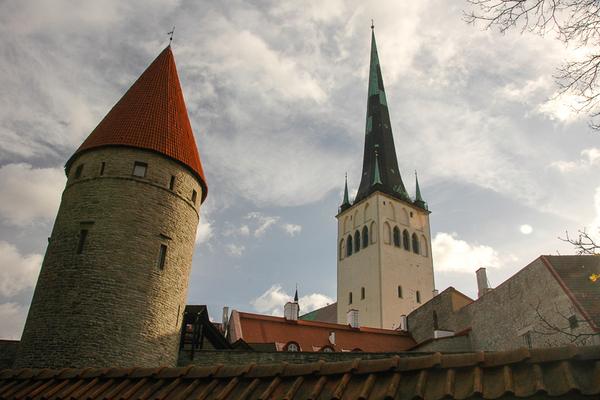
Tallinn’s thick walls and ramparts protect its medieval centre.
This history is run through with threads of survival and adaptation, including a distinct culture, language and perseverance that belie the country’s size. Empires, wars and occupiers — from the Danish in the thirteenth century to the Soviets in the twentieth, have all tossed Estonia about. But in the end, Estonia found its voice, quite literally, by singing its way out of the Soviet Union and into independence.
A Taste of Independence Between the World Wars
Although the region had first been settled 9,000 BCE and the Estonian language (Finno-Ugric) and culture were in place since 800 AD, the Estonian people were ruled by other empires and powers until the early twentieth century. It was between the World Wars, from 1920 to 1939, that Estonia experienced its first taste of independence. During this time, Estonians celebrated their national identity, including their traditional songs and literature and the country’s white-blue-black tri-coloured flag.
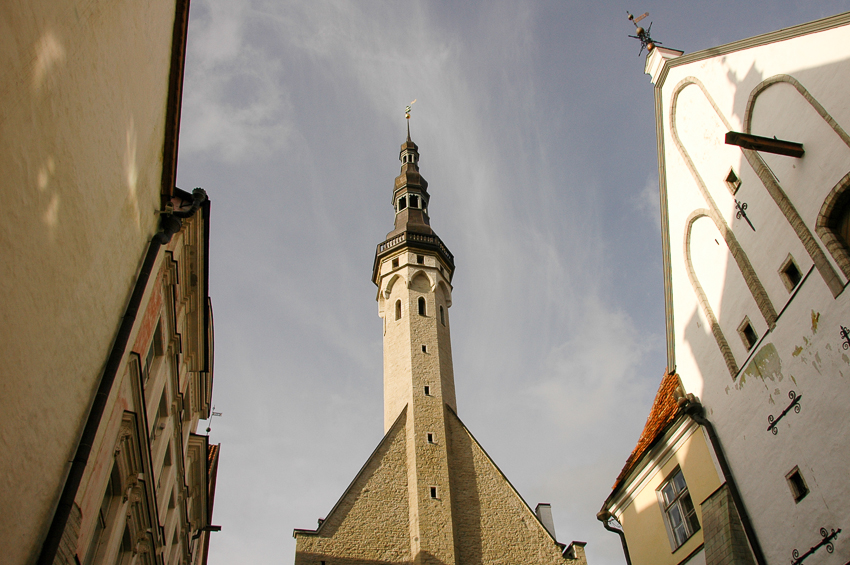
Tallinn’s old town, including its famous Town Hall dating from 1404.
This was also a time of economic and agricultural progress. Friends in Estonia were always quick to remind me that in this brief window, the country’s standard of living was higher than that of Finland, its neighbour to the north. I noticed, too, that Estonians born in this period tended to have a more optimistic — and often more creative — spirit to them. Despite living though the atrocities of World War II (including deportations and occupation) they recalled what Estonia felt like, what Estonia had been… and what it could be once again.
Estonia: Unique among Soviets, subtle in its rebellion
Estonia was invaded by the Soviet army in 1940 and was incorporated as a Soviet Republic. Shortly thereafter, the Nazis occupied the territory from 1941-44. Through the war, Estonia lost about a quarter of its population due to death, conscription and deportations to Siberian camps.
After the war, Estonia never quite fit the mold of obedient Soviet Republic. Its connection to Western Europe and Scandinavia meant that it was very different compared with other Soviet states further east. A friend, Sirje, told me that Estonians would learn of statehood from their grandparents — the collective imprint of independence persisted. Even though it seemed so unattainable during the Soviet period, the dream that it could change didn’t die. This mattered.
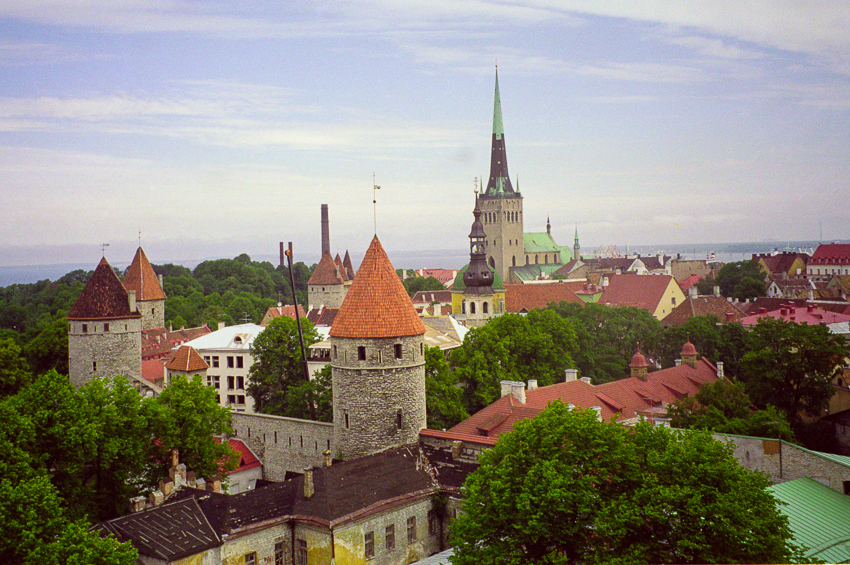
Tallinn’s Old Town is a reminder of its deep connection to Scandinavia over the centuries.
Most Estonians viewed Soviet rule as occupation. They found ways to actively resist, as in the case of the Forest Brothers stymying Soviet troops in the Estonian woods. Among the more subtle forms of resistance, however, was traditional song and dance. Because these were considered forms of nationalism, their performance was expressly forbidden by the Soviet authorities. With friends and neighbours acting as informants, preserving musical traditions involved risk — but it was a risk that many Estonians took to ensure their national identity persisted.
Estonia’s song festivals dated back to 1869 — a tradition they were able to maintain during the Soviet era; however, performances required permission and Russian songs were a prerequisite.
Sirje remembers one of those festivals: “When the performance was over, the choir of 30,000 didn’t leave the stage. Instead, a few brave performers started singing an old song… We were proud of what could be done when we stuck together. We supported one another. National songs weren’t allowed in schoolbooks, but our grandparents knew them and they lived in people’s memories.”
A Singing Revolution to independence
In the mid-to-late 1980s, the Soviet Union’s Mikhail Gorbachev introduced Perestroika, a political movement focused on restructuring and reform. Estonians saw an opportunity and the independence movement and gained momentum.
Open protest and vocal dissatisfaction came to a head in the summer of 1988. After the Soviet authorities cancelled a rock concert in Tallinn, Estonians walked in protest over 5km (3 mi) to Estonia’s traditional festival grounds.
That night, protesters gathered to sing folk songs and to wave tri-coloured flags tucked away in attics since Estonia’s former independence. Seemingly innocuous in retrospect, these displays of nationalism carried the threat of arrest and prison time. While many feared that Soviet authorities would break up the protest, the troops never came.
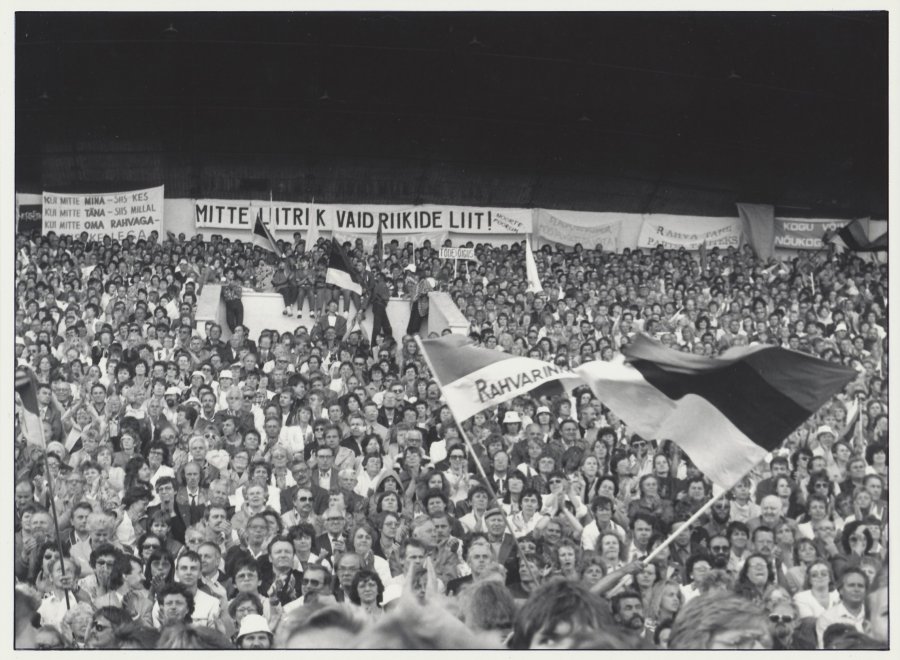
Estonians from the whole country join together for independence. Photo courtesy rahvarinne.ee.
People continued to pour into the festival grounds. And Estonians carried on singing for six more nights.
Sirje recalls the first time she’d heard of Tallinn’s Singing Revolution: “I had tears in my eyes. It was magnificent — the feeling that something was in the air. But one could never be certain.”
On the final night, 300,000 people (over a quarter of the country’s population) amassed to sing in a unified voice of their purpose and identity. Trivimi Velliste, Chairman of the Estonian Heritage Society, gave voice to the first official public demand for a return to independence.
My Estonian friend, Teet, talks about it years later:
“It’s hard to explain this feeling; freedom was so near. But why song? That’s because songs were the only way during Soviet times that Estonian people could express their [solidarity]. Believe it or not, but I have tears in my eyes right now, even after so many years. I think it was quite a miracle that this song festival took place at all and was not disbanded by the Soviets.”
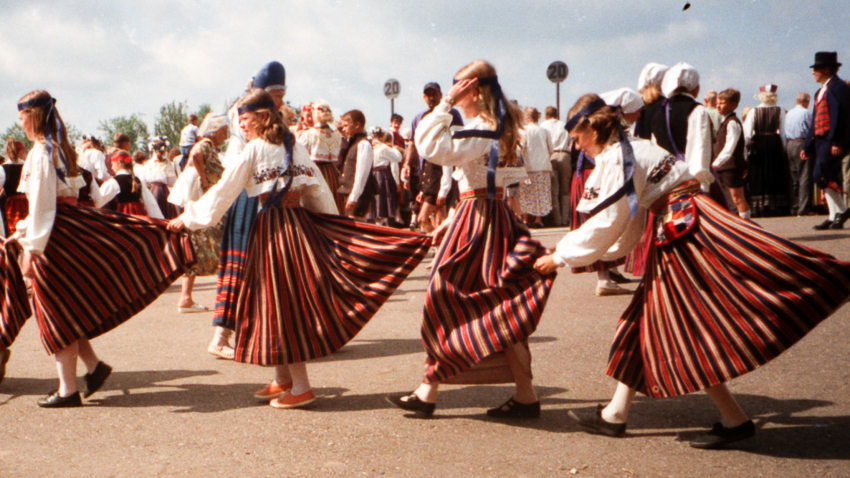
Memories from an Estonian song festival, years later.
Of course, the Soviet Union didn’t give in quite that easily. As Sirje recalls: “We didn’t believe that this movement would lead us to independence. The will was there but it was hard to believe. We knew this was just the beginning; emotionally, however, it was very important.”
The struggle for independence continued, encompassing three years of persistent demonstrations and protests. In August 1989, residents from the then Soviet Republics of Lithuania, Latvia and Lithuania formed a human “Baltic Chain” stretching over 600km (370 mi). Over 2m people linked hands between the capitals of Tallinn, Estonia and Vilnius, Lithuania.
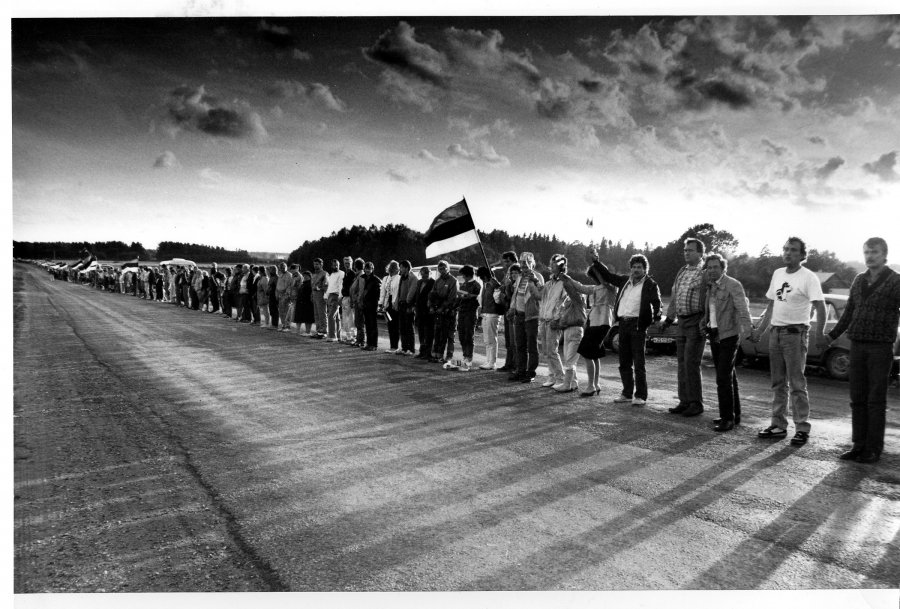
The Baltic Chain, citizens from all three Baltic states join together to ask for freedom. Photo courtesy rahvarinne.ee.
As quaint as this may sound today, it stood, quite literally, as a deliberate act of civil disobedience. At the time, my friend Teet was serving in the Soviet Army in Kaliningrad, not too far from Lithuania. He described how they were on high alert the night before. Orders were given to sleep with their Kalashnikovs and military vehicles were parked outside the barracks — to mobilize at a moment’s notice. The order was never given, and the peaceful demonstration of the Baltic Chain went on. People again risked their lives to make a public statement calling for independence — not only to the Soviets, but also to the world.
On August 20, 1991 Estonia was officially recognized by the world, and the Soviet Union, as an independent and sovereign nation. It was the first Soviet Republic to achieve this, and it did so peacefully without any bloodshed.
Remarkable, when you think about it.
“When Estonia became independent it was unbelievable. We were afraid for a long time that it would not last long,” Sirje remembers, “At the beginning, people were prepared to eat only potato peels to stay independent.”
Independent again… and still singing
Although the transition to a new economic and social order has not always been easy, Estonia continues to sing. The National Song and Dance Festival continues to take place every five years at the same festival grounds in Tallinn. Nearly ten percent of the population comes together as either performers or audience.
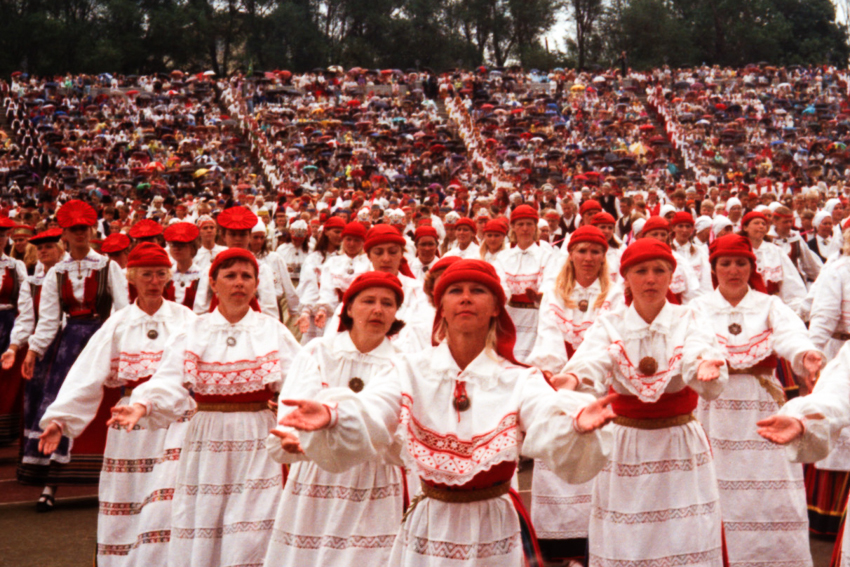
Estonia’s Song and Dance Festival with participants from all over the country.
In 1999, I was fortunate to be there for one of these national events. I also remember the lead up to the festival in the small town of Märjamaa, where I’d lived. Choirs of all ages practiced for months on end. Not only did they prepare to perform as a choir, but they also needed to be ready to join other choirs from throughout the country and be able to sing together.
As the song festival came to a close, the main stage filled with over 18,000 singers of all ages from every corner of Estonia. Each of their outfits was individual, with bright colours and embroidery stitched distinctly as the expression of region or village. But their voices were united; they sang as one.

The National Song Festival comes to a close with a final act.
I remember the mood in the song festival grounds that day as one of pride and optimism. I was — no, we all were — engulfed in sound and movement, the rhythm of the festival.
The rhythm of a people who sang to be free.
Getting There
Check out Estonia on our Baltic Adventure tour!. We’re thrilled at the prospect of showing you this big blue planet of ours — check out our small group trips here.























